Arthroscopic anterior acromioplasty was first described in 1987. Since then there have been continuous technical improvements to the surgical technique. The first experiences with joint mirroring were made on the knee joint. A few years later, arthroscopic operations were carried out in the area of the shoulder joints, later also in the so-called subacromial space (space under the shoulder roof). According to current studies, the functional results of arthroscopic subacromial decompression have been rated as good or very good in 85-90%. The complete success of the therapy generally only occurs a few weeks or months after the intervention. Approximately 60% of those affected continue their sport after the operation at the same level as before the operation.
As a rule, the operation is carried out under outpatient conditions. In principle, a stationary operation is also possible and conceivable.
If the operation is uncomplicated, the arthroscopic subacromial decompression procedure takes approximately 45 minutes.
After the anesthesia has been initiated and, if necessary, a so-called shoulder arm block is placed for postoperative pain therapy. The patient is either in a so-called beach chair position (deck chair position) or in a side position. When lying on your side, the arm is pulled lengthwise up to 5 kg to expand the shoulder joint. No tourniquet or void is created. As a rule, two arthroscopic approaches with a length of approx. 5 mm are made. Access is from the rear and one from the side under the shoulder roof. First, the shoulder joint is mirrored. All relevant structures in the shoulder joint are inspected and photo-documented. The arthroscope is then inserted into the space under the shoulder roof (subacromial space). First, the subacromial space and the acromion surface are inspected. The bursa is checked for inflammatory changes and the rotator cuff for tears. The most inflamed parts of the bursa are then removed with a so-called electrocautery or a shaver. After extensive hemostasis, with a clear overview, a bone disc of approx. 5mm on the front shoulder roof is removed with a router. Towards the back, the amount of bone tissue removed is reduced. At the end of the operation there is a smooth lower surface of the shoulder roof. If there are bony protrusions in the area of the shoulder corner joint, for example, these are also removed and removed. If the front band on the shoulder roof still has a constricting effect, this is cut in whole or in part. At the end of the operation, drainage (drain hose) can be inserted. The injection sites are sutured and a sterile bandage is applied. Any swelling of the shoulder that may have occurred due to the use of the arthroscopic irrigation solution subsides within a few hours after the operation.
What is Arthroscopy of Shoulder Joint?
Arthroscopy is a procedure used by orthopedic surgeons to diagnose and treat the joints from the inside.
If you have arthroscopy of shoulder joint, the surgeon puts a small camera (arthroscope) in your shoulder joint, and it transmits the image on a display. Looking at the image the surgeon operates with surgical instruments.
Since the arthroscope and surgical instruments are too thin, your surgeon can make very small incisions instead of big cuts during a standard open operation. It helps to reduce pain and shortens recovery period.
Arthroscopy of shoulder joint is made since 1970. Diagnostics, treatment and recovery after the surgery has become easier and faster than ever before. Arthroscopy is being constantly improved, because new methods and instruments are introduced.
When the Arthroscopy of Shoulder Joint Is Recommended?
Your doctor can advise Arthroscopy of shoulder joint, if you experience pain that cannot be relieved without surgical treatment. Non-surgical treatment includes rest, physical therapy, medications and infections that can cause inflammation. Inflammation is normal body reaction to a trauma or a disease. It can trigger swelling, pain and tightness.
Main diagnoses:
- Meniscus seams;
- Plastics of the front crucial ligament;
- Tear of articular lip;
- Damage of rotational ferrule;
- Shoulder-slip;
- Frozen Shoulder;
- Epicondylitis (periostitis).
Traumas, excessive load and wearing because of aging are the main reasons of pain in the shoulder. Arthroscopy of shoulder helps to relieve painful sensations.
Arthroscopy of shoulder includes the following basic manipulations:
- Restoration of movements
- Removal of bone
- Removal or restoration of the upper lip
- Restoration of ligaments
- Removal of inflamed tissue or lose cartilage
- Restoration after recurrent shoulder slip
Least widespread procedures include freeing of nerves, restoration after fractures, and removal of cysts that can also be performed with the help of arthroscopy. Some surgical procedures, such as endoprosthetics of shoulder joint, require an open operation with pretty big cuts. Open operations tend to be riskier and require a longer recovery period.
Planning the Operation
If you are ready for arthroscopy, you should go through a full medical examination. A doctor will check your health and define the problems that can hinder arthroscopy. Prior to the operation, you should inform the surgeon about the medications you use. Additional tests and analyses can be required. Most probably, you will have to cease taking some medications some time before the operation.
Most often, arthroscopy is performed on an outpatient basis. It means you don’t have to stay overnight in a hospital.
Before the operation, you will need to talk with your anesthesiologist. Arthroscopy of shoulder is usually made with local anesthesia. The numbing agent is injected into the neck or the upper part of shoulder. Blocking of nerves helps to control the pain during several hours after the operation.
Most arthroscopy operations last less than an hour, though, every case is individual.
The Process of Operation
Positioning and preparation
When you’re in the operating theater, the surgeon will sit you so that to adjust the arthroscope and check the inner part of the shoulder. There are two basic positions for a patient going through shoulder arthroscopy:
- Beach chair. It’s a semisitting position that you typically get when sitting in an armchair with a folding back.
- Transverse decubitus. In this case, a patient lies on his side.
Every position has its own advantages. The surgeons choose the position based on the procedure and individual preparation.
After positioning, the surgeon spreads an antiseptic over the skin of shoulder and will put fixing devices on to immobilize your arm.
Procedure
First, your surgeon will make an injection of fluid in the shoulder to blow the joint (it helps to see the structures of your shoulder better through an arthroscope). After that, the surgeon will make a small cut in the shoulder for the arthroscope. It will transfer the image on the display for the surgeon to see the inside of your shoulder.
When the problem is clearly defined, the surgeon will insert other small instruments via other cuts. Special instruments are applied for shaving, cutting, clip, sutural pass and stitching. Pretty often, special devices serve to fix stitches in bones.
Your surgeon can close the cuts with stitches or a sterile strip (e.g. a small patch) and will cover it with a big soft bandage.
Recovery after operation
After the operation, a patient stays in his ward for 1-2 hours. Nurses will check patient’s health and administer pain killers.
Although rehabilitation after arthroscopy is faster than after an open operation, it may still take several weeks.
You can experience pain and discomfort during a week after the operation. If you had a serious open operation, you can suffer from pain for several weeks before it subsides. Ice will reduce pain and swelling. Your doctor can administer pain killers, if you need.
Several days after the operation, you can replace the bandage with wrapping. You can start showering when wounds cease emitting wound secretion, don’t scratch them. Most likely, you will need a special sling or an immobilizer to protect your shoulder.
Rehabilitation
Rehabilitation plays crucial role for getting back to everyday activities. An exercise program will help you to restore powers and light movements. If you had had previous surgical invasion, ask your surgeon to find a physical therapist to control exercise programs for you.
Complications
Most patients don’t experience any complications after shoulder arthroscopy. However, as any other operation, it has some risks. As a rule, they are minor and can be easily treated. Potential problems after arthroscopy include infections, excessive bleeding, blood clots and damage of vessels or nerves.
Before the operation, your doctor will discuss possible complications with you.
Long-term Results
Since patients have different health, the period of full rehabilitation differs.
If you used to have a minor surgical invasion, you won’t need a sling, and you can recover within short terms. You can get back to work or studying several days after the procedure.
More complicated surgeries require a longer rehabilitation period. Although arthroscopy leaves small cuts, the joint can be significantly damaged inside. Full recovery can take several months.



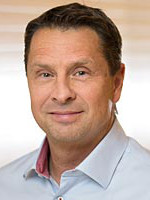



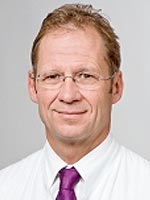


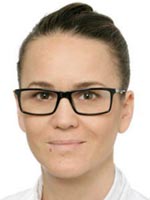
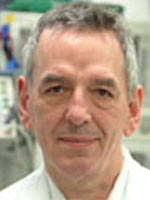


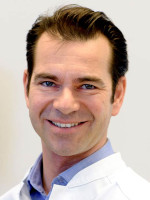
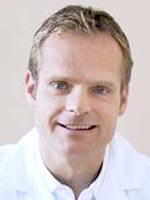









 Loading ...
Loading ...


